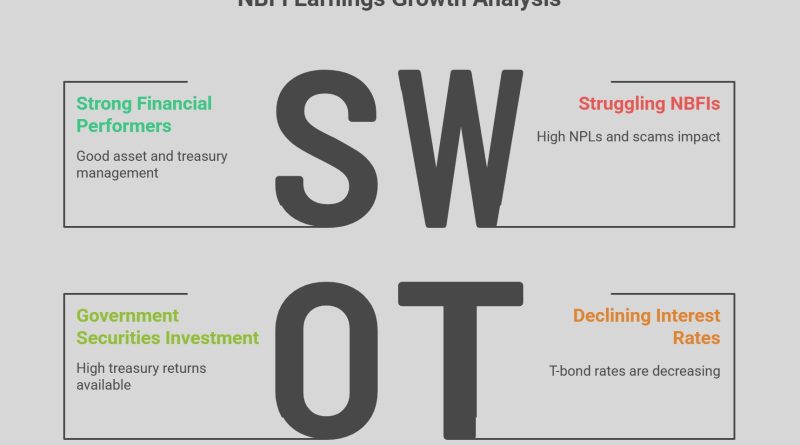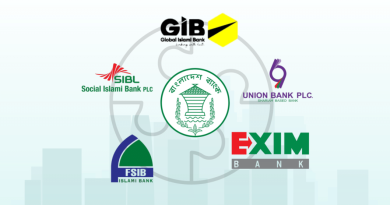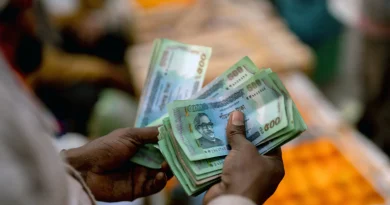Only four out of 15 listed non-bank financial institutions (NBFIs) that have published their half-yearly financials for 2025 reported year-on-year profit growth, largely driven by income from government securities, while most others continued to struggle with weak asset quality, rising interest expenses, and legacy loan defaults.
The outperformers—IPDC Finance, IDLC Finance, DBH Finance, and United Finance—stood out for their prudent financial management, strong operational efficiency, and minimal non-performing loans (NPLs). These institutions capitalised on elevated yields from government securities amid weak demand for private-sector credit and volatile lending conditions.
Treasury Gains Offset Declining Interest Margins
According to market analysts, although net interest income (NII)—a key revenue stream for NBFIs—declined for most institutions due to increased deposit costs, robust returns from investments in Treasury bills and bonds helped buoy bottom lines for the better-managed firms.
“Those with strong balance sheets, low-cost funding, and solid governance reallocated idle funds to safe-haven government securities, taking advantage of the high yields,” said Akramul Alam, Head of Research at Royal Capital.
IPDC Finance’s net profit surged over 45% year-on-year to Tk 150 million in January–June 2025, despite a 22% decline in NII. The company’s income from investments jumped 159% to Tk 565 million, supported by better Treasury returns and favourable capital market trends.
“Our strong performance reflects a strategic focus on Treasury efficiency, risk management, and cost optimisation amid a challenging macroeconomic environment,” said Rizwan Dawood Shams, Managing Director of IPDC Finance.
IDLC Finance mirrored this trend, posting a 45% jump in profit to Tk 1.08 billion, with investment income skyrocketing 452% year-on-year to Tk 1.47 billion in the first half. However, NII dropped by 23% during the same period due to rising interest expenses following the adoption of a market-based interest rate regime.
DBH Finance, known for its disciplined focus on housing finance, reported a modest 3% profit growth to Tk 420 million. While its NII slipped 12%, investment income rose 45%. The company maintained a sub-1% NPL ratio and grew its deposit base by 18%.
United Finance recorded a 6% rise in profit to Tk 32 million, aided by a 15% increase in investment income to Tk 99 million.
Losses Widen for Most Firms
In contrast, nine of the reporting NBFIs remained in the red, and two—Bangladesh Finance and National Housing Finance—suffered steep declines in profits, by 63% and 25% respectively, primarily due to deteriorating asset quality and a sharp increase in provisioning for bad loans.
Phoenix Finance posted the largest loss of Tk 2.63 billion in H1 2025, although this marked a 40% year-on-year reduction due to lower provisioning.
As of March 2025, NPLs in the NBFI sector had ballooned to nearly 35% of total loans, driven by scams and prolonged mismanagement in several firms. This has prompted heightened regulatory scrutiny and capital provisioning requirements, further weighing on profitability.
Regulatory Action on the Horizon
The Bangladesh Bank, citing liquidity crunches and depositor distress, has served show-cause notices to 20 NBFIs—14 of which are publicly listed—including scandal-ridden People’s Leasing, International Leasing, FAS Finance, and Bangladesh Industrial Finance Company. The central bank has also begun implementing a merger and resolution plan under the Bank Resolution Ordinance, with possible revocations of licences in severe cases.
“These troubled firms are dragging down the sector’s image and financial stability,” said Alam. “We expect more consolidation and regulatory intervention going forward.”
Outlook
Analysts believe that unless the NPL burden is decisively addressed and investor confidence restored, the sector’s overall growth will remain stunted. However, well-managed NBFIs with sound asset quality and Treasury efficiency may continue to outperform in the near term.
Of the 23 NBFIs listed on the Dhaka Stock Exchange, eight are yet to publish their H1 financials.






